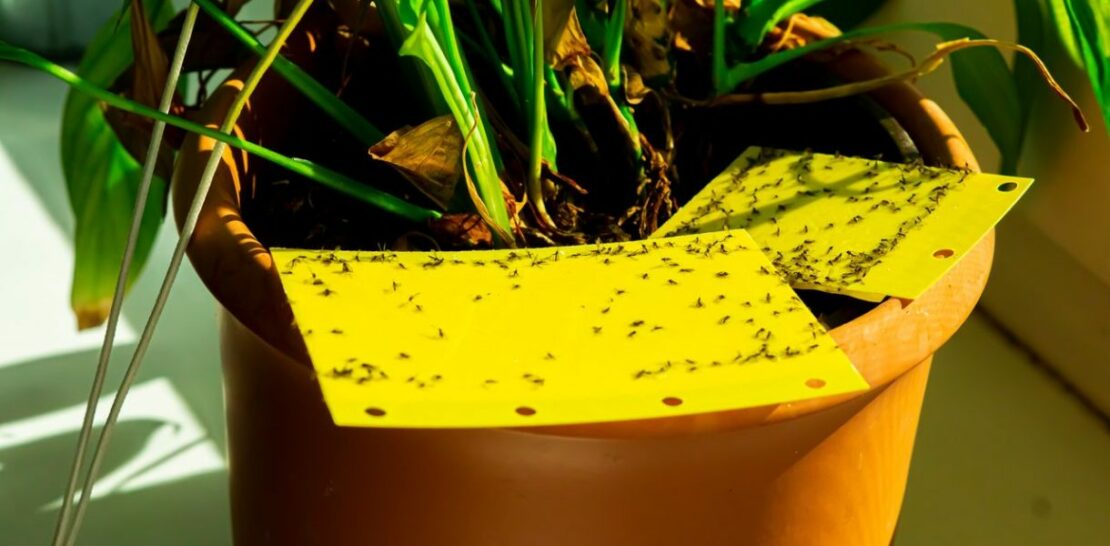Midsummer evenings should be a time for enjoying the great outdoors, but the presence of midges often turns this dream into a nightmare.
These tiny, flying insects are not only irritating but can also cause painful and itchy bites.
This comprehensive guide will equip you with the knowledge and strategies you need to prevent and eliminate midges from your home, ensuring that you can enjoy your living space without the constant annoyance of these tiny pests.
Understanding the Enemy: What is a Midge?
Before diving into effective methods for prevention and elimination, it is crucial to understand what midges are and what attracts them to your home.
Midges belong to the family Ceratopogonidae, which includes over 4,000 species of tiny, flying insects. The most common types of midges that invade homes are non-biting midges, also known as chironomids, and biting midges, commonly known as no-see-ums or sand flies. These insects are attracted to various factors, including moisture, light, and the presence of humans or animals.
Non-biting midges are primarily a nuisance due to their swarming behavior and attraction to lights, while biting midges feed on the blood of mammals, including humans. Biting midges can cause painful, itchy bites and transmit diseases in some cases.
Preventative Measures: Stop Midges before They Invade
Prevention is always better than cure, and this holds true for midge infestations as well. By implementing the following strategies, you can significantly reduce the likelihood of midges finding their way into your home and prevent the need for more drastic elimination methods.
- Eliminate standing water: Midges breed in stagnant water, so eliminating sources of standing water around your home is essential. This includes emptying flowerpots, birdbaths, and rain gutters, and ensuring proper drainage in your yard.
- Reduce outdoor lighting: Midges are attracted to light, so reducing the amount of outdoor lighting around your home can help keep these pests at bay. Opt for yellow “bug lights” instead of white lights, as these are less attractive to insects.
- Seal entry points: Seal any cracks or gaps in your home’s exterior to prevent midges from entering. This includes sealing around windows, doors, and any vents or pipes that lead into your home.
- Use screens: Installing screens on your windows and doors will allow you to enjoy fresh air without inviting midges inside. Be sure to choose a fine mesh screen to keep even the smallest midges out.
Elimination Strategies: Banishing Midges from Your Home
Despite your best efforts at prevention, midges may still find their way into your home. In such situations, it is essential to employ effective elimination strategies to get rid of these pests as quickly as possible. The following methods have proven to be highly effective against both non-biting and biting midges.
- Traps: There are several types of traps available for midge control, including light traps, sticky traps, and CO2 traps. Light traps use UV light to attract midges and then trap or electrocute them, while sticky traps use adhesive surfaces to catch the insects. CO2 traps mimic the breath of mammals, attracting biting midges before trapping them. Be sure to place traps strategically around your home, targeting areas where midges are most prevalent.
- Insecticides: Applying insecticides to areas where midges congregate can be an effective method of control. Choose a product labeled for use against midges and follow the manufacturer’s instructions carefully. Keep in mind that insecticides should be used as a last resort, as they can also harm beneficial insects and contribute to pesticide resistance.
- Natural repellents: Many essential oils, such as citronella, eucalyptus, and lavender, have been shown to repel midges. Create a homemade repellent by mixing a few drops of essential oil with water in a spray bottle, and apply to areas where midges are a problem. Additionally, certain plants, such as marigolds and lemon balm, can help deter midges when planted around your home.
- Professionalhelp: If your midge problem persists despite your best efforts, it may be time to call in the professionals. Pest control companies have access to specialized equipment and products that can effectively eliminate midges from your home. Be sure to choose a reputable provider and discuss your concerns and expectations with them before proceeding.
Long-Term Solutions: Maintaining a Midge-Free Environment
Successfully eliminating midges from your home is only part of the battle. To ensure that these pesky insects do not return, it is important to maintain a midge-free environment through long-term strategies and vigilance. Consider the following tips for keeping midges at bay in the future.
Landscaping: Proper landscaping can play a significant role in discouraging midges from taking up residence near your home. This includes maintaining a well-trimmed lawn, removing leaf litter and debris, and avoiding overwatering plants. Furthermore, consider incorporating midge-repelling plants, such as lavender and marigolds, into your garden design.
Regular maintenance: Regular home maintenance is crucial for preventing midge infestations. This includes routinely cleaning gutters and drains, repairing any leaks or damage to your home’s exterior, and ensuring that screens on windows and doors remain in good condition.
Monitoring and early intervention: Keep a close eye on the areas around your home for signs of midge activity, such as swarms or an increase in the number of bites experienced by you or your family members. By identifying a potential midge problem early, you can take swift action to address the issue before it becomes a full-blown infestation.
Community collaboration: Midges do not respect property boundaries, so it is important to work together with your neighbors to address potential breeding sites and other factors that may be attracting midges to your area. Share information and resources, and consider organizing neighborhood cleanups or educational events to raise awareness and promote effective midge control strategies.
In conclusion, winning the war on midges requires a multifaceted approach, incorporating prevention, elimination, and long-term maintenance strategies. By understanding the biology and behavior of these tiny pests, you can take effective action to protect your home and enjoy a midge-free living environment. Armed with the knowledge and tools provided in this comprehensive guide, you can confidently face the challenge of midges head-on and reclaim your home from these irritating insects.




